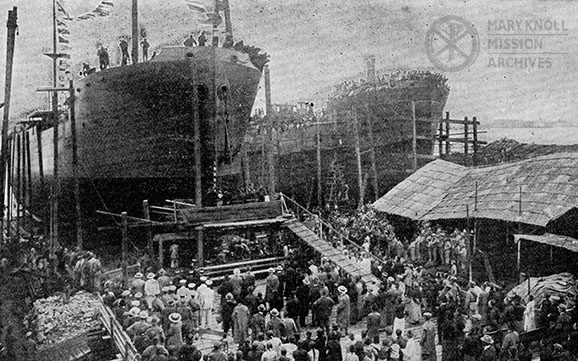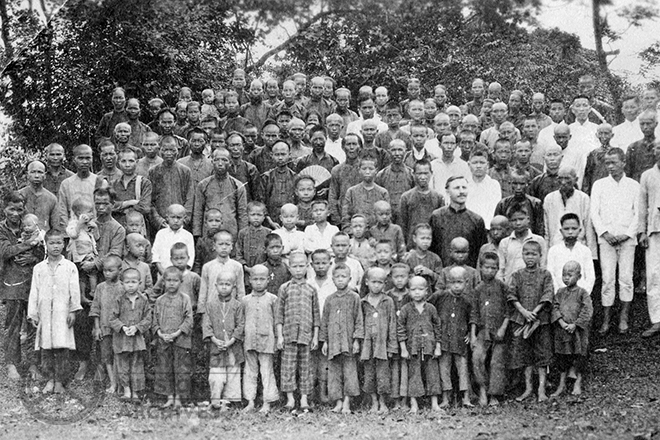Often we experience culture shock when we visit a place for the first time, whether on vacation, study abroad, or a mission trip. You may be surprised by the new flavors, a strange language, or unexpected customs. On Maryknoll’s very first mission in 1918, the missioners could not have expected the new sights, sounds, and interactions awaiting them even before arriving at their mission site.
After traveling from Maryknoll to Tokyo, Fathers Bernard Meyer and James E. Walsh continued by boat to China while Fathers Ford and Price made their way by train. Upon their arrival in Shanghai on October 18, Father Meyer was amazed by their experiences off the boat. He wrote to Maryknoll, “It was about nine o’clock we two – I do not know which was the first – stepped onto the soil of China… There was little time for conjectures and day-dreams, however, as a shouting, pushing crowd of [dock workers] seized our bags and came within an inch of shoving Fr. Walsh off the dock for a mud-bath. It was our first experience, and, of course, they robbed us…”

A photo of the Shanghai shipyard featured in The Field Afar, 1918
After finally arriving in Canton in November, the Fathers celebrated Christmas in a style they had never seen before. As Father Meyer said, “We have celebrated Christmas, such a Christmas! Christmas we never dreamed of nor conceived of in all our lives… after Mass, a Chinese band hired by the Christians played Chinese music all day nearly, and the Christians shot off loads of fire crackers during the day. They insisted on giving us a banquet which they were considerate enough to let our ‘boy’ prepare and such chickens and ducks and shrimps and meats, etc. it would be difficult to match… It was a great day such as we will never again experience perhaps and we thank God for it.”
So the next time you go traveling and see something you never expected, you can imagine you’re reliving the experiences of the Maryknollers as they visited uncharted mission territories. Bon voyage!

Fr. Meyer with Maryknoll’s congregation in Tungchen, China, c. 1920
